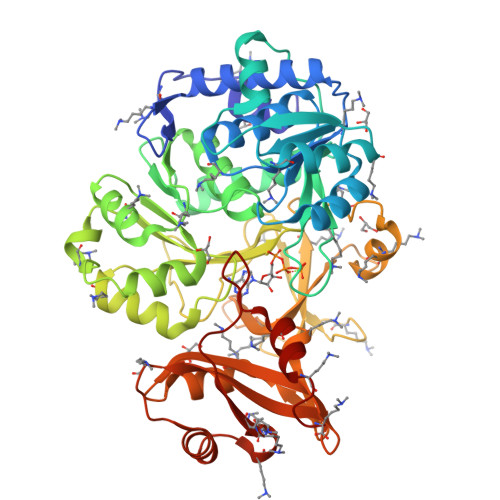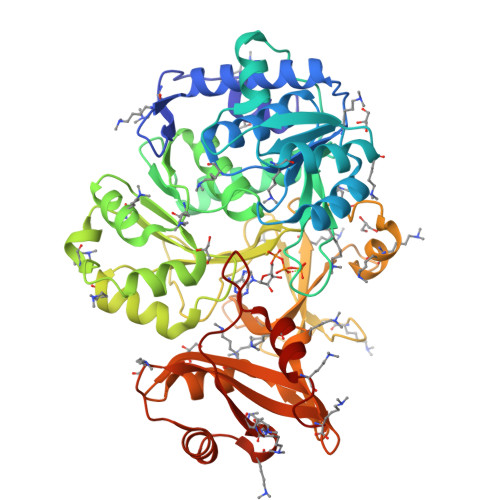Structure-Guided Expansion of the Substrate Range of Methylmalonyl Coenzyme A Synthetase (MatB) of Rhodopseudomonas palustris.
Crosby, H.A., Rank, K.C., Rayment, I., Escalante-Semerena, J.C.(2012) Appl Environ Microbiol 78: 6619-6629
- PubMed: 22773649
- DOI: https://doi.org/10.1128/AEM.01733-12
- Primary Citation of Related Structures:
4FUQ, 4FUT - PubMed Abstract:
Malonyl coenzyme A (malonyl-CoA) and methylmalonyl-CoA are two of the most commonly used extender units for polyketide biosynthesis and are utilized to synthesize a vast array of pharmaceutically relevant products with antibacterial, antiparasitic, anticholesterol, anticancer, antifungal, and immunosuppressive properties. Heterologous hosts used for polyketide production such as Escherichia coli often do not produce significant amounts of methylmalonyl-CoA, however, requiring the introduction of other pathways for the generation of this important building block. Recently, the bacterial malonyl-CoA synthetase class of enzymes has been utilized to generate malonyl-CoA and methylmalonyl-CoA directly from malonate and methylmalonate. We demonstrate that in the purple photosynthetic bacterium Rhodopseudomonas palustris, MatB (RpMatB) acts as a methylmalonyl-CoA synthetase and is required for growth on methylmalonate. We report the apo (1.7-Å resolution) and ATP-bound (2.0-Å resolution) structure and kinetic analysis of RpMatB, which shows similar activities for both malonate and methylmalonate, making it an ideal enzyme for heterologous polyketide biosynthesis. Additionally, rational, structure-based mutagenesis of the active site of RpMatB led to substantially higher activity with ethylmalonate and butylmalonate, demonstrating that this enzyme is a prime target for expanded substrate specificity.
Organizational Affiliation:
Department of Bacteriology, University of Wisconsin, Madison, Wisconsin, USA.




















